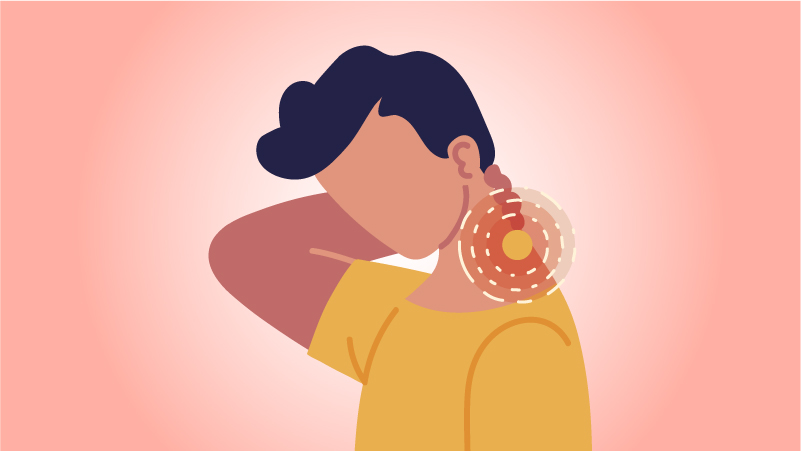Pain in the neck: how to deal
with a modern-day ailment
As our lives become ever more intertwined with gadgets, the strain of
‘tech-neck’ looms large and unaddressed. Discover how the power of
everyday self-care can help you sidestep chronic neck pain in
our increasingly digital world.
Issue 1 | June 2023

 Subscribe and ensure you don't miss the next issue!
Subscribe and ensure you don't miss the next issue!
Picture a weightlifter, contorting in pain, shouldering a heavy barbell. This is not unlike an inhabitant of today’s digital world. When hunched over screens, we subject our necks to the multiplied weight of our heads—a phenomenon borne of the physics of posture. This seemingly invisible burden, carried for many hours during the day, fuels the escalating prevalence of tech-neck: a discomfort rooted in the neck, shoulders and upper back.
As we keep up with technology’s breakneck speed, poor posture has become an unintended companion to our digitalised, sedentary lifestyle. It manifests in the awkward angles of our laptop screens, the bend over our smartphones, and the constraining ergonomics of our workstations.
Exercise caution in the search for relief
The road to relief, as described by Dr Teo, begins with non-operative interventions like physiotherapy and acupuncture. But when these prove ineffective, the journey can veer towards more invasive approaches such as injections or even surgery. This spectrum of treatments, while necessary to some, underscores a reactive—rather than proactive—management of neck pain.
The severity and chronicity of neck pain drives many patients to seek novel remedies. Platelet-rich plasma (PRP), for instance, has been used to stimulate healing and regeneration throughout the body, combatting painful degenerative conditions such as osteoarthritis of the knee and lateral epicondylitis of the elbow, otherwise known as tennis elbow. Evidence for its effectiveness, however, is inconsistent and it should not be considered a universal remedy. The Singapore Ministry of Health currently approves PRP only for non-surgical treatment of acute muscle and ligament injuries, as well as augmentation of acute Achilles tendon ruptures.
“We must remember that the primary battle against chronic pain lies not so much in treatments, but rather in everyday preventative actions,” says Dr Teo.
The power of prevention
The path to a neck-pain-free world, it seems, hinges less on blood plasma and more on our day-to-day practices. While neck aches are indeed a menace of the modern world, they are preventable through holistic approaches.
Neck pain might be a ubiquitous affliction of our time, but with the right preventative measures, its persistent grip can be loosened. And as novel treatments like PRP emerge, an age-old adage continues to ring true: prevention is better than cure.
In our quest to shake off the metaphorical weight of our heads, the most powerful tools are right at our fingertips—our hands. With every screen adjustment, every chair reconfiguration, every realignment of our posture, we wield the power to gradually tip the balance away from neck pain—one small act of self-care at a time.
Follow the exercises in these videos to strengthen the muscles around the neck and upper back, which may help alleviate tension or pain in the neck.
Like this article? Simply subscribe to make sure you don't miss the next issue of EnvisioningHealth!